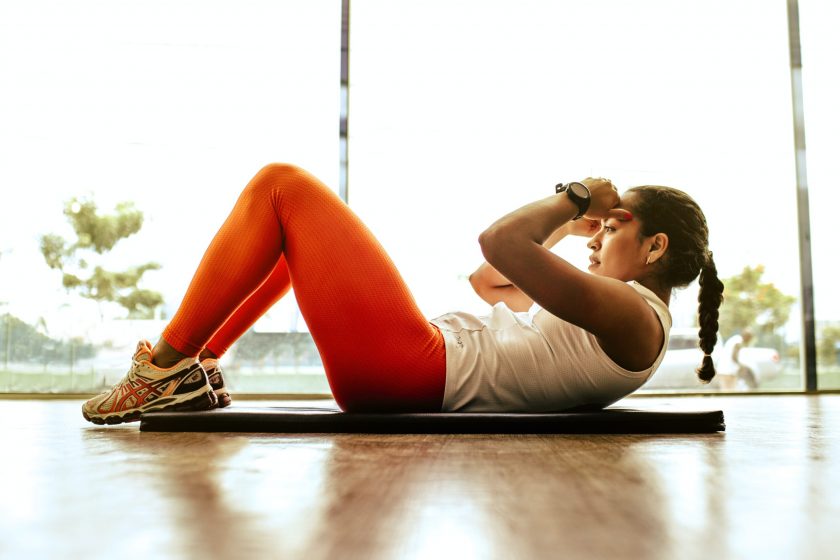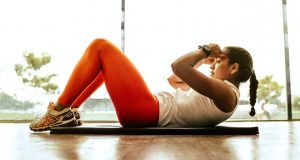Yoga as an exercise is a physical practice consisting primarily of postures, sometimes linked by flowing sequences, often followed by breathing exercises, sometimes ending with relaxation or meditation. Yoga has become familiar throughout the world in this form, especially in America and Europe. It is derived from the postures used in Hatha yoga’s medieval spiritual discipline. Still, it is usually called ‘yoga’. Several names, including modern postural yoga and transnational Anglophone yoga, have been given to yoga by academics as an exercise.
How is it so easy to get started? A positive mindset, loose-fitting clothing, a willingness to open up to learning, to enlightenment are everything you need. Practicing yoga on an empty stomach is usually advisable.
Yoga poses are available to engage in, and they are as follows:
Warm-up poses: This is a general warm-up to relax tight muscles; each yoga level will have various warm-up levels.
* Standing Poses: Again, it all depends on what degree of yoga classes you are attending or doing, this usually encompasses hands to feet pose, triangle pose, sun salutation, Tree Pose, Stretch Pose, Warrior Pose and Stand stretched leg forward fold.
* Seated Poses: When seated, these are exercises, using a yoga mat is standard practice. According to the stage you are on, the poses from this place again. Hero Pose, Stretched leg forward fold, Child Pose, and seated forward bend.
* Supine Poses: It means yoga, face-up, on your back. Arm pulls, Arm lifts, Pose locus, Lunge leg reclining and Pose wind relieving.
* Twist Poses: These movements are also perfect for massaging the abdominal regions and strengthening the digestive tract to enhance the back. The half spinal twist and the turning of the sage.
Backbends: These exercises are ideal for strengthening the arms, legs, and abdomen and supplying the spine with flexibility.
Inverted Postures, Balancing Poses: These exercises are intended to enhance circulation, improve the functioning of the glandular system, stimulate the brain and alleviate abdominal pressure. Headstand, Plough and Shoulder Stand.
* Ending poses: These are a relief for the end of a session, as the title says. The last corpse, the position of the corpse, or savasana.
Yoga exercises are set up to maintain a balanced mind as well as body. If you persevere with all the yoga poses, the benefits for mind, body and spirit are advantageous. The beauty of yoga practice is that, unless you know what you are doing, you can practice at home or at the workplace or any place you feel relaxed, it is always advisable not to reach your boundaries, never go outside your comfort zone.
Difference between fitness and yoga
Yoga strengthens and tones the muscle, much like daily exercise. Usually, routine practice makes the body more robust and less flexible. For instance, weight training builds strength by breaking down and rebuilding muscle tissue. The effect of this breaking down and reconstruction of muscle is the massive, muscle-bound look and tighter muscle mass. By toning the muscles, yoga strengthens the body and, due to stretching, produces longer, leaner muscles. Yoga develops a more robust and more versatile body. The purpose of daily exercise is also to raise the heart rate.
While yoga to increase heart rate can be practised vigorously, it can also be practised in a way that reduces heart rate and lowers blood pressure. Typically one exercises to the point of exhaustion. You feel as if you have had a workout at the end of a yoga session, but are more relaxed and energized. Hatha yoga is not only a sequence of exercises that require concentration, breathing and movement but a principle of activity.
Yoga also has several additional advantages. The body massages are bending, stretching and turning, and the internal organs are relaxing, helping digestion and removal. Owing to the toning of the endocrine system, our hormones are brought into better harmony. The respiratory system is improved, and it soothes the nervous system. Often, stress management is a significant advantage of yoga practice. In reality, the practice of yoga affects all of the body’s systems. A trained yoga instructor will advise you, regardless of age, health conditions and level of fitness, on the most suitable yoga practice for you.
Yoga is the body’s balanced movement, knowledge of breath and steadiness of mind, whether practising aggressively with demanding poses or practising gently with calming poses. This is yoga in motion, a body/mind union
Weight Loss-Yoga and Fitness Benefits
Plumpness and obesity have not been in trend for the past few decades. People like lean and trim looks. In addition to this, they also welcome a bundle of health issues. The belly has been growing with the consumption of fast food, contributing to obesity as well as plumpness. Unfortunately, it has become part of our rapid lives, decreasing our energy levels. Yoga is one such art that has always provided the best mental focus choices. It encourages the remaining healthy and is also an optimistic force for both the mind and the body. Also, paving ways to lose weight works wonders. Yoga is a tool for weight loss since it preserves all facets of mental, emotional and physical harmony. This results in a personality that is powerful, vibrant and slender and suits those of all age groups. Yoga helps to bring power over actions and mind.
Before working out to lose them, the leading causes of obesity should be well known. This is critical as it prevents errors from being replicated by an individual. One of the primary reasons for obesity is eating unhealthy food, overeating between meals, fast food, psychological factors such as anxiety, depression, anger, and sometimes inherited propensity. The typical signs are the rising weight associated with increased intake of food, decreased productivity, dissatisfaction, and increased mental and emotional stress. Yoga is an outstanding promoter of both obesity and internal pressure reduction. Yoga plays a crucial role in the treatment of obesity, and it offers abilities that take care of both the whole body and the mind.
Some of the yoga postures and positions are helpful in that the fat in our body. Twisting, leaning backwards and forward helps to reduce the fat near the butts, calves, and abdomen. The different poses help to burn fat in the legs and arms. Sun salutations are suitable for the lungs and are one of the best exercises, too. In yoga, there are other methods to regulate the level of energy and the mind. A balanced diet decreases the fats in the body, including fruit consumption, leafy vegetables and energy juices.
One of the critical methods for losing thigh fat is an exercise with age contributing to obesity and plumpness, the fats around the waistline increase. There are several waistline reduction medicines available, but these medicines are unable to bring about lasting improvement. Doing exercises, along with a balanced diet, contributes to fat reduction. The only way to minimize obesity and plumpness is to burn more calories, and good workouts are the best for reducing fat levels. To reduce thigh fat and the waistline, exercises such as raising the outer thigh and inner thigh are necessary. Ultimately, to make all the difference, daily exercise, yoga, a healthy meal and nutritious snacks twice a day, and plenty of water are mandatory.
 NaijaVibe NaijaVibe | Download Latest Nigerian Music & Mp3s
NaijaVibe NaijaVibe | Download Latest Nigerian Music & Mp3s



